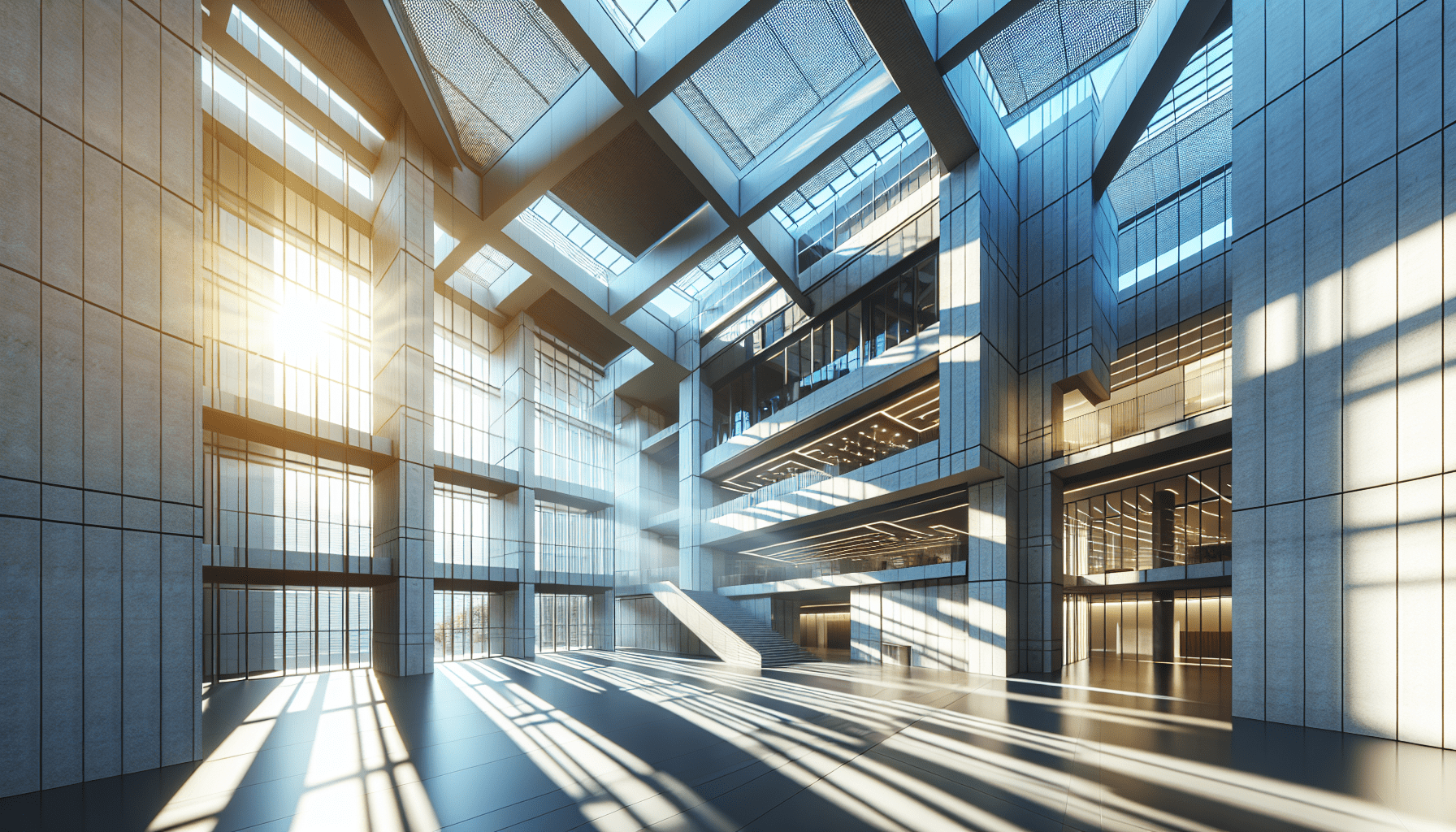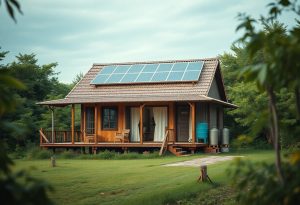Welcome to our exploration of “Harnessing Natural Lighting in Building Design.” In this intriguing article, we delve into the many ways we can embrace natural light to enhance our living and working spaces. By strategically incorporating elements like large windows, skylights, and open floor plans, we can create environments that not only reduce energy consumption but also improve our overall well-being. Join us as we uncover practical tips and inspiring examples of how natural light can transform our buildings into healthier, more vibrant places. Have you ever wondered how we can use natural lighting in building design to create spaces that are both beautiful and energy-efficient? It’s a fascinating topic that dovetails sustainable architecture with the psychology of space. Let’s explore it together.
The Importance of Natural Lighting
Natural lighting isn’t just about using the sun to brighten our spaces—there’s much more to it. Natural light plays a crucial role in our overall well-being, energy savings, and aesthetic appeal.
Benefits for Well-being
Exposure to natural light can enhance our mood and even improve our health. Those long, dark winter days can affect our energy levels due to a lack of sunlight. However, buildings designed to maximize natural light can boost our mental health, improve our sleep patterns, and increase our productivity.
Energy Savings
By harnessing natural light, we can significantly reduce our reliance on artificial lighting, thereby cutting energy consumption and costs. Imagine a world where our electricity bills are lowered simply because our buildings are intelligently designed!
Aesthetic Appeal
Natural light has an unparalleled ability to transform spaces, highlighting textures, colors, and architectural features in ways that artificial light simply cannot. It adds a dynamic and inviting quality to any room.
Key Concepts in Natural Lighting Design
To effectively harness natural lighting, a solid understanding of key concepts is essential.
Daylighting
Daylighting is the practice of placing windows, skylights, and other openings, and reflective surfaces so that natural sunlight can provide effective internal lighting during the day.
Solar Orientation
The position of a building relative to the sun plays a crucial role in how well it can capture natural light. Understanding solar orientation helps us design buildings that maximize daylight exposure while minimizing unwanted heat gain.
Glare Control and Diffusion
Direct sunlight can sometimes be too intense, causing glare and discomfort. Effective natural lighting design incorporates elements that diffuse light and control glare, such as shades, blinds, and strategically placed vegetation.

Strategies for Maximizing Natural Light
Let’s dive into some practical strategies for incorporating natural light into building design.
Building Orientation
By orienting the building to take full advantage of the sun’s path, we can optimize natural light exposure. For instance, in the Northern Hemisphere, buildings facing south will receive the most sunlight throughout the day.
Windows and Openings
Windows are the most direct way to bring natural light into a space. However, the placement, size, and type of windows greatly influence the quality and quantity of light received.
Placement
Strategically positioning windows can help control light and heat gain. High windows, for example, allow light to penetrate deep into rooms, while low windows offer more direct sunlight.
Size
Larger windows can bring in more light but can also lead to higher heat gain or loss. Balancing size with energy efficiency is key.
Types
Different types of windows, like double-glazed or low-e glass, offer varying benefits in terms of light and energy efficiency. Choose the type that suits your climate and lighting needs.
Light Shelves and Reflectors
Light shelves reflect natural light deeper into the building, reducing the need for artificial lighting. Reflectors and mirrors can also help distribute light more evenly.
Skylights and Roof Windows
Skylights and roof windows are excellent for bringing light into spaces that aren’t adjacent to vertical walls, such as attics and interior rooms. Intelligent design choices regarding their placement can prevent overheating and glare.
Use of Courtyards and Atriums
Incorporating courtyards and atriums allows natural light to penetrate deeply into a building’s interior spaces. These features also provide opportunities for natural ventilation and create visually pleasing environments.
Engineering and Technological Solutions
Modern engineering and technology provide us with tools to optimize natural lighting even further.
Advanced Glazing Options
Recent advancements in glazing technology have produced options like electrochromic glass, which can change its opacity in response to sunlight, or thermochromic glass, which adjusts its tint with temperature fluctuations. These options offer better control over lighting and heat gain.
Light Tubes
Light tubes, or solar tubes, capture sunlight on the roof and channel it through reflective tubes into indoor spaces. These provide natural light to areas that would otherwise remain dark.
Intelligent Lighting Systems
Smart lighting systems can adjust artificial lighting levels based on the amount of natural light available, ensuring a consistent light level and minimizing energy use.
Reflective and Light-colored Surfaces
Using light-colored paint and reflective surfaces can amplify the effect of natural light, reducing the need for artificial lighting.

Challenges and Solutions
Harnessing natural light comes with its set of challenges, but these can be mitigated with thoughtful design.
Excessive Heat
While sunlight is beneficial for lighting, it can also cause overheating. This can be controlled with proper shading techniques, such as awnings, louvers, and strategic landscaping.
Glare
Excessive brightness can cause discomfort and impede vision. Solutions include using diffusing materials on windows, incorporating adjustable shading devices, and designing with indirect light paths.
Privacy Concerns
Maximizing natural light often means using large windows, which can compromise privacy. Solutions include frosted glass, strategic vegetation, and using building orientation to minimize direct sightlines from outside.
Sustainability Considerations
Sustainable design aims to reduce the environmental impact of a building throughout its life cycle. By incorporating natural lighting, we cut down on energy consumption, but it’s also crucial to ensure materials used are sustainable and locally sourced when possible.
Cases and Examples
Real-world examples provide us with lessons in best practices and innovative approaches to natural lighting.
The Salk Institute
This iconic building in La Jolla, California, designed by Louis Kahn, masterfully uses natural light. The building façade features large windows that flood the lab spaces with daylight, reducing the need for artificial lighting.
The Bullitt Center
The Bullitt Center in Seattle is often referred to as the greenest commercial building in the world. It uses a combination of large windows, light shelves, and solar tubes to achieve net-zero energy consumption.
Apple Park
Apple’s headquarters in Cupertino showcases how modern engineering can address the challenges of natural lighting. Its ring shape and extensive use of glass ensure that every workspace gets abundant daylight while advanced shading systems and natural ventilation keep the building comfortable.

Best Practices for Interior Design
Interior design plays a significant role in maximizing the benefits of natural light.
Open Floor Plans
Removing unnecessary walls allows light to penetrate deeply into the building’s interior, reducing the need for artificial light during the day.
Colors and Materials
Light-colored walls and ceilings can make a space feel brighter and more open. Reflective materials, such as mirrors and glass, help to bounce light around the room.
Furniture Placement
Placing furniture in a way that does not block windows allows for the seamless flow of light. Open shelving and low-profile furniture can also aid in dispersing natural light throughout the room.
Window Treatments
Using sheer curtains or adjustable blinds can help control the amount of light entering a space without completely blocking it.
The Future of Natural Lighting in Building Design
The future holds exciting possibilities for natural lighting in building design. Emerging technologies and evolving design paradigms promise even more efficient and aesthetically pleasing ways to incorporate natural light.
Integration with Renewable Energy
As solar panels become more efficient, integrating them with other natural lighting strategies can result in buildings that are even more energy-efficient.
Biophilic Design
Biophilic design emphasizes the connection between humans and nature. By incorporating natural light, greenery, and organic forms, architects can create spaces that nurture our innate need for a connection with nature.
Dynamic Facades
Dynamic facades can adjust their transparency in response to varying sunlight conditions, optimizing the light input while minimizing glare and heat gain.
Personalized Lighting Environments
Advancements in smart home technology may soon allow individuals to customize their natural lighting environments according to their preferences, enhancing comfort and productivity.
Integration with Health and Well-being Technologies
Future designs may better integrate natural lighting with health-focused technologies, creating spaces that proactively contribute to physical and mental well-being.

Conclusion
The benefits of harnessing natural lighting in building design are immense, encompassing well-being, energy efficiency, and aesthetic appeal. With a greater understanding of the key concepts, strategies, and challenges, we can design buildings that make the most of the sun’s natural light, enhancing our daily lives.
As we move forward, the integration of natural light with cutting-edge technology and sustainable practices will ensure that our buildings are not only more beautiful and comfortable but also more in harmony with the environment. Together, we can illuminate the path to a brighter, more sustainable future.
By using the principles outlined in this article, architects, designers, and even homeowners can create spaces that optimize natural light. Not only will these spaces be beautiful and efficient, but they will also contribute to our overall well-being.



